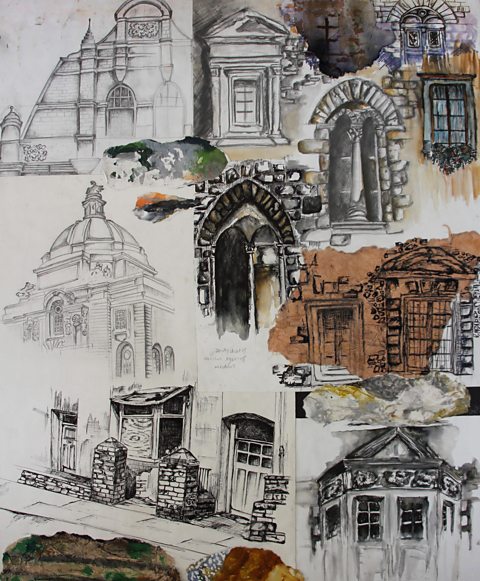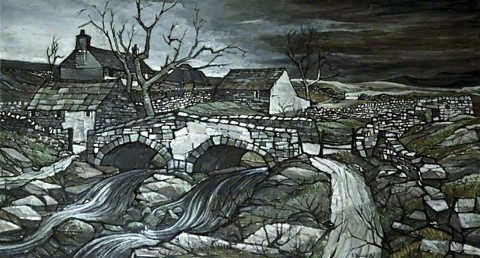Developing use of materials and techniques

Early development is an opportunity to try out materials and techniques that are new to you or that you may not be confident with.
You have nothing to lose at this stage - some studies will be more succesful than others.
You can save time by trying a few different techniques on one development study. This can be done by splitting it into sections and applying different materials in each section.
Alternatively, you may draw a development study, but only work up a small section in a selected technique.

Choosing materials and techniques to develop
Think about techniques which will let you develop your intended style and help you to to communicate your theme effectively.

A student inspired by this monochromaticUsing tones of one colour, for example black, grey and white, or shades of blue. landscape might try to create a similar mood by exploring different types of paint, such as acrylic and temperapasteA type of water-based paint., perhaps applied on black paper.
They may also choose to explore dry media which can be used in an expressive manner, such as oil pastel, charcoal and chalk. Some printmaking techniques may also be appropriate.
Another area to explore could be using different thicknesses of paint or painting onto different materials to develop varied textures.